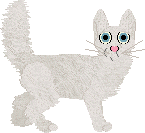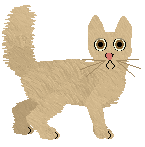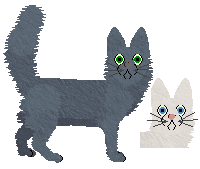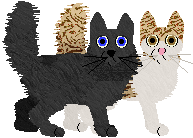An ancient breed, the Angora is often said to be the first longhaired cat in Europe, a statement that while dramatic, ignores the fact that native northern and eastern breeds certainly predate the arrival of the Angora to Europe in 1520. However it holds a kernel of truth: the silky, elegant coat of the Angora was unlike any other coat seen in Europe at that time. They were very fashionable until the Persian arrived in the late nineteenth century, after which the history of the Angora clouds. Certainly they fell from favour, and were interbred with the double-coated Persian cats. However Turkey realized that preserving their national cat was important, and by the 1950s there was a well-established conservation program operating out of the Ankara Zoo in Ankara, Turkey. The zoo preferred the flashy all-white cats, with blue or odd eyes. Americans living in the city managed to obtain the first imports to America in 1954. They were accepted for registration in 1972, in white only; the colours were not added until 1978. Today, all Turkish Angoras must be able to trace their ancestry back to cats imported directly from Turkey.
Type & judging remarks
The Turkish Angora is a balanced, graceful cat with a fine silky coat in contrast to the firm, long muscular body beneath it. The head is small, but in balance with the length of the body. The ears are tall, wide at the base and set closely together, high on the head, vertical and erect. Although the traditional colours of the breed are solid white and solid black, breeders have worked to further develop other colours while maintaining type. Today, little colour preference remains in the breed, although some judges certainly lean towards the whites.






 in any amount.
in any amount.










